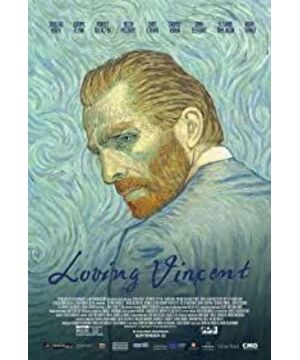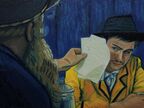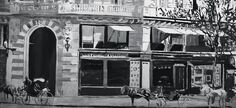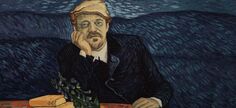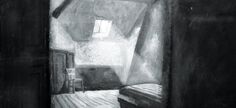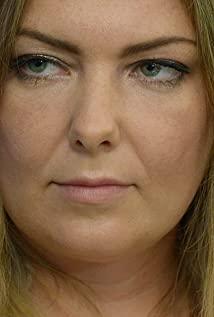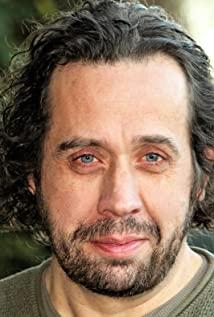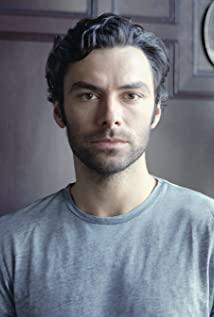I didn’t think I wanted to write a film review, but when I watched the advance scene in Hong Kong, I found that the top film reviews were under the banner of popular science but there were many errors. I suddenly wanted to write my own "Van Gogh complex". , Or your own "starry sky complex." [Mark, now those articles have been replaced by better popular science stickers; anyway, I am neither here to describe Van Gogh's life nor to introduce Van Gogh's paintings. . . I just talk about "Van Gogh and the starry sky" in my own eyes] -----------------Part 1) A pseudo-Van Gogh fan [This section has nothing to do with the movie, you can skip it] ------------------- Am I a fan of Van Gogh? To be honest, I am not. But I am a fan of "Starry Sky". "Starry Sky" or translated into "Starry Night" is my favorite painting, none (I like to use the name "Starry Sky", but more people use "Starry Night"). I have a series of surroundings about the starry sky. My ideal in life is to go to the Museum of Modern Art in New York to see the entity of the starry sky (sorry, I haven't seen it yet, maybe I'm a fake fan). . . . But Van Gogh is not my favorite painter. I like Impressionism. I remember a friend once said that people who don't understand art like to say that they like Impressionism. Well, I don't understand art. I don't worry about admitting this. Among the Impressionist painters, Monet is the favorite, but if I want to ask me which one of his is the most favorite, I can't tell. I just like the color and haziness of Monet's myopia. However, Van Gogh, I can count several favorite works, except "Starry Night", the same type of "Starry Night of the Rhone" (1888), 12 sunflowers in 1890 in "Sunflower", "Iris "(1890), "Apricot Blossom in Bloom" (1890). . . I almost like all his works with bright colors and no loss of details. I thought I had lined up in front of the Van Gogh Museum in Amsterdam for a whole morning before squeezing in, and then came out with a bunch of surrounding souvenirs; and the one who stopped for the longest time in all the big and small art galleries in the UK was also Van Gogh. High painting. . . . So speaking of this, the love for Van Gogh's works is clear. This is also because I can read the emotions in Van Gogh's works. Standing in front of his works, I can feel the mood of the painter. So I have read three biographies of Van Gogh, although only three are meager, but I haven't read the biographies of other painters very much (recall, one Turner, one Picasso). . . Hey, so to speak, I'm still an illiterate fan. . . . Regarding the life of Van Gogh, here is another excellent science post:"Guide to the Van Gogh Cinematic Universe-"But How Do You Know His Life?"" -----------------Part 2) The Starry Sky in the Movie------ ------------- The movie starts with "Starry Night" as the screen and ends with "Starry Night on the Rhone". It is also mentioned in the movie that Van Gogh is like a rising star, and the bright stars in his later works are also his own spiritual pursuit. In his early years, he believed in God so much. He truly became a preacher, preaching among the workers and peasants, but he saw the cruelty of life, and the shock of life made him doubt God (the housekeeper in the movie also said that Van Gogh Blasphemy), but his heart has been pursuing the sacred. In fact, many people use the starry sky to pay tribute to Van Gogh. For example, the familiar song "Starry Starry Night". In fact, this song is called "Vincent" and it was included in Don McLean's 1971 album "American Pie". After the cover, everyone remembered the lyrics more than the original name. Sure enough, this song became the ending song of the movie. Back to the movie, the theme of the movie, in my words, is actually "Van Gogh's starry sky".
Starry Night Over the Rhone, painted in September 1888, is now in the Musée d’Orsay in Paris (I was very fortunate to have seen the real object:) -----------------Part 3) Van Gogh Death ------------------- "When I draw a sun, I want people to feel that it is spinning at an alarming speed, sending out a terrifying wave of light and heat. When I paint a field of wheat, I hope people feel that the wheat is working towards their final maturity and blooming. When I paint an apple tree, I hope people can feel that the juice in the apple is opening the peel and the core of the apple. The seed in the world is striving to bear fruit. When I draw a man, I will draw his surging life. If there is no more infinite, profound, and real thing in life, I will no longer be attached to the world... …" — Van Gogh’s letter to his younger brother. In reality, after living in a mental hospital, Van Gogh said in a letter to his younger brother that he has become more and more fond of painting cypress trees (such as the black flame in the starry sky). The cypress in Gao's pen points directly to the sky like the fire of life, which is a portrayal of his spiritual pursuit.
Road with Cypress and Star (1890) Why did Van Gogh, who yearned for something beautiful, committed suicide? Someone might ask, this is also the story line of the movie, so that the movie abruptly turns the story into a suspense movie, and has been piecing together clues from different versions to infer the cause of Van Gogh's death (and very strangely, the three I have seen None of the different versions of the biographies involved Van Gogh's relationship with his psychologist, nor did it mention the relationship between the psychologist's daughter and Van Gogh). . . . . But for me, at least when I was reading a biography, Van Gogh's death was very natural. Such a lonely artist, searching for his spiritual world in art, found a way to liberate his spirit-death. Of course, if you have to use your own professional interpretation, I would say that Van Gogh has a typical bipolar depression (also called bipolar disorder, sometimes manic and sometimes depression) and a certain degree of autism. The biography will say that Van Gogh's mother has a history of neurosis (epilepsy) in the family, so Van Gogh will also have seizures. . . However, I prefer to believe that Van Gogh’s matrilineal family has a history of mental illness. After all, psychology at that time was not yet budding, and mental illness was always classified as some physical illness. . Judging from the fact that his mother has been trapped in the shadow of her first child dying prematurely and influenced her to care for Van Gogh, there is something wrong with her spirit. . . . And Van Gogh’s tragedy may be doomed from birth: Van Gogh’s birthday is the same day as the anniversary of his first child’s death, so Van Gogh inherited the first child’s name "Vincent" and became The first Vincent substitute. . . In this way, Van Gogh, who has become a shadow of others, constantly wants to be recognized, not accepted or even ignored by his mother, and constantly denies himself. It completely constitutes the "shadow of childhood" in Freudian diagnosis. . . But putting aside the theories of psychology, I often think that the meaning of death is different for everyone. Although death will definitely bring pain to their loved ones, for some people, death means the transcendence of the body, especially For people of faith. So I respect every person who commits suicide, there must be a pursuit of freedom, so that they can overcome the fear of pain. . . . . I once shared this idea in a public class with more than 200 psychologists, and the result was severely criticized by the expert. He thought this idea was "dangerous", but I was secretly funny below-the spiritual world is rich People may not need others to understand. -----------------Part 4)
Van Gogh living alone, besides painting, another way to express himself is to write letters, especially to his brother, Theo ("Theo", Theodorus van Gogh). His brother has not only been the spiritual backing of Van Gogh. , Has always been (almost the only) economic backing. Because Van Gogh often wrote letters, the postman Joseph became Van Gogh's only friend in the last few years of his life. Just a few people, some things, he repeatedly painted and imitated his own paintings...this became all of life in Arles, a small town in the south of France. This is different from Paris, which is full of temptations. Although Van Gogh met many famous painters during his stay in Paris, he also lost his style in the process of blindly imitating. In Arles, he finally recognized his style, and inspiration continued to emerge. Most of the high-priced auction items of later generations were also born during this period. Van Gogh likes this small town very much. He has invited his relatives and friends to live in his yellow room many times. Gauguin, his idol and friend, also visited and lived for a while, but because of the differences between the two people on art and the dispute over the source of Van Gogh's funds, after Van Gogh cut off his ears, their friendship ended completely.
The Night Cafe in the Place Lamartine in Arles, 1888 Artists must be alone, just as scientists do not allow public opinion to step in when they are pursuing the truth, the beauty pursued by artists does not need to cater to the aesthetics of others. Van Gogh's loneliness made his work. His soul lives in the works forever, and you can feel his loneliness and his non-loneliness when you look at the paintings. . . So when you stare at his paintings, you cry, because you see his soul and your own soul. You know that staring at his paintings, you are not alone. This is what I often comfort myself. As I read more and more, I also found that I don't like talking and socializing, so I naturally lost my social skills. . . But if I really want to be a scientist, I must get used to and like this kind of loneliness. . . to be alone, but not lonly..... -----------------! Benefit time! ------------------- Finally, many trailers say that this movie is naked eye 3D, Excuse Me? ! Does this propaganda mean that Van Gogh's paintings are all naked-eye 3D? Here is my collection of Van Gogh's paintings after tilting, let's take a look at what is naked eye 3D!
Landscape With Carriage And Train 1890
The peasant woman who tied up the straw (imitation Miller) 1889
The above pictures are almost all the works of Van Gogh during Arles (1888-1890). Some of them also appeared in the movie. The ones without names are I don’t make names~~~~(>_< )~~~~ (Pseudo Van Gogh fan reproduction). In addition, an extra large egg is attached --> 360-degree panoramic view (this image is not made by me, it is a source file, everyone who leaves a message downstairs, just bookmark the webpage ٩(•̤̀ᵕ•̤́๑))
View more about Loving Vincent reviews


